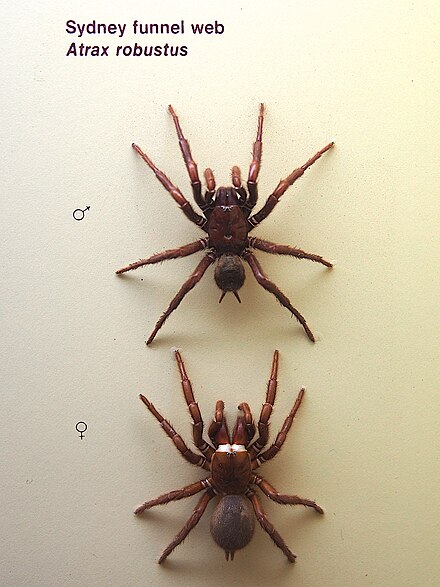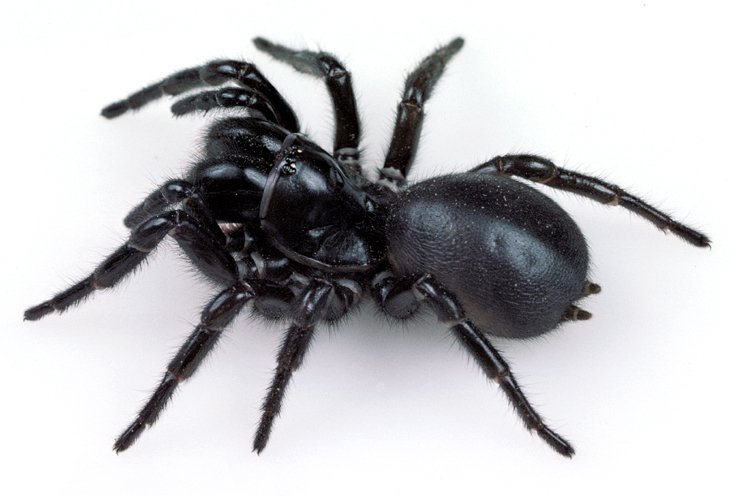The funnel web spider is one of the most intriguing and dangerous arachnids in the world. Known for its aggressive behavior and potent venom, this spider has sparked both fear and fascination. Whether you are a wildlife enthusiast or someone simply curious about dangerous creatures, understanding the funnel web spider is essential.
Blog Contents
What is a Funnel Web Spider?
The funnel web spider refers to a group of spiders belonging to the Hexathelidae and Atracidae families, most famously represented by the Sydney funnel-web spider (Atrax robustus), which is native to Australia. These spiders are known for constructing distinctive funnel-shaped webs, typically located in dark corners of gardens, under rocks, or in hollow logs. The web is used to trap prey, and the spider patiently waits at the narrow end of the funnel, ready to strike.

Habitat and Distribution
Funnel web spiders are primarily found in Australia, especially in the Sydney region, but they also inhabit parts of South Africa, New Zealand, and the Americas. Their habitat preference is often hidden, which makes them difficult to spot. They thrive in moist environments, such as forests, gardens, and urban areas, where they can build their webs undisturbed. While the Sydney funnel-web is the most well-known species, other funnel web spiders exist in various parts of the world.
Physical Appearance
Funnel web spiders are typically large, with some species having bodies that grow up to 1.5 inches (4 cm) long. They have a dark, shiny appearance, ranging from brown to black, with distinct, glossy carapaces. Their legs are long, spiny, and often appear much larger in proportion to their bodies. The most notable feature is their large fangs, which are capable of delivering a venomous bite to both prey and predators alike.

Behaviour
Funnel-web spiders typically construct silk-lined tubular burrows with collapsed “tunnels” or funnel-shaped entrances. These webs are often surrounded by irregular trip-lines that stretch over the ground. In some cases, instead of trip-lines, the spiders create trapdoors, and the entrance tube may branch into a Y or T shape. These spiders favor sheltered, moist environments such as those found under rocks, logs, or the rough bark of trees. The long-lived females spend most of their time in their burrows, waiting for prey like insects, lizards, or frogs. When the prey crosses the trip-lines, the spider quickly emerges to capture and inject venom into its victim.
Male funnel-web spiders, distinguishable by the modified terminal segment of their palps, are more active during warmer months as they search for mates. This wandering behavior can bring them into contact with humans, as they may enter backyards, homes, or even fall into swimming pools. Interestingly, funnel-web spiders can survive in water for up to 24 hours by trapping air bubbles on the hairs around their abdomen. These spiders are primarily nocturnal, as daytime conditions would cause them to dry out. During the day, they seek cool, moist places to hide. After heavy rain, they become more active, especially if their burrows have been flooded. If threatened, funnel-web spiders will display aggressive behavior, rearing up on their hind legs and showing their fangs, and when they bite, they often maintain a firm grip on their victim, sometimes biting repeatedly.
Are Funnel Web Spiders Dangerous to Humans?
Funnel web spiders, particularly the Sydney funnel-web, are considered highly dangerous to humans due to the potency of their venom. A bite from these spiders can cause a range of symptoms, including intense pain, sweating, nausea, and in severe cases, paralysis or death. Fortunately, as mentioned, antivenom has made bites from these spiders far less fatal than they once were.
While funnel web spiders are aggressive, they will usually only bite in self-defense. They are not out to attack humans but will strike if they feel cornered or threatened. To avoid encounters, people living in areas with funnel web spiders should take precautions such as wearing shoes outdoors, checking areas where spiders are likely to hide, and being cautious when handling rocks or logs.
How to Protect Yourself from Funnel Web Spiders
- Wear Protective Clothing: Always wear shoes, gloves, and long pants when walking through areas where funnel web spiders may live.
- Inspect Areas Before Reaching In: Before reaching into dark places, such as under rocks, in sheds, or in garden sheds, check for webs or any signs of funnel web spiders.
- Keep the Area Clean: Funnel web spiders prefer areas that are dark and cluttered. Keep your yard or living area clear of debris to discourage these spiders from taking up residence.
- Seek Medical Help Immediately: If bitten by a funnel web spider, seek immediate medical attention. With prompt treatment, including the use of antivenom, the chances of recovery are very high.
Conclusion:
The funnel web spider is a remarkable creature with both an awe-inspiring hunting method and dangerous venom. While its aggressive behavior and potent bite can be intimidating, it is an important part of its ecosystem. With the proper knowledge and precautions, people can coexist with these fascinating arachnids without risk.
Whether you are a spider enthusiast or someone simply seeking more information on these creatures, the funnel web spider is a perfect example of how nature can combine beauty, danger, and necessity in a single organism.
Read our previous post.
